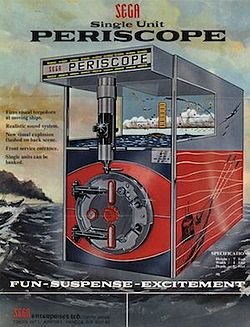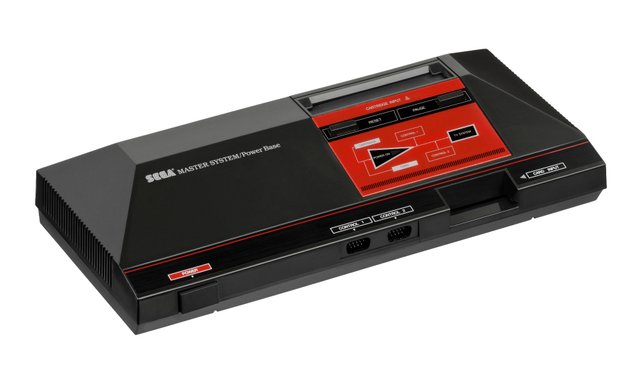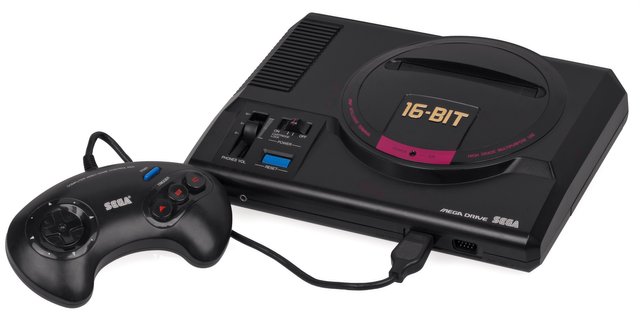The Origins Of SEGA
THE ORIGINS OF SEGA
If Atari deserves credit for introducing the arcade game to the West, credit for introducing to Japan belongs to Sega. Sega indirectly grew from the Korean War. This conflict erupted on 24th June, 1950. In order to stop communism spreading on the Korean Peninsula, America entered the war with Douglas MacArthur in the role of Supreme Commander of Military Forces. One consequence of this was that US military bases across Japan found themselves with a massive buildup of personnel and some companies sought to profit from this. One such person was Marty Bromley, a businessman who wanted to distribute coin-operated machines to American bases, a practice the US senate made rather difficult. For a start, there had been crippling restrictions imposed on the vending machine industry since the early 50s and in 1952 Bromley's coin-op business was thrown out of many military installations. In Japan, Bromley made a deal with a company called Nihon Goraku Bussan, whose line of business was also vending machines. Bromley and Bussan forged a partnership that would provide American bases with all manner of vending machines, slot machines and Jukeboxes. It was around this time that pinball was invented and because it bore similarities to pinball, Bromley and Bussan decided to import it.
Jukeboxes, slot machines and pinball. Nearly all of Western pub entertainment had successfully made the trip to Japan courtesy of Bromley and Bussan. Four years later, the arcade game would make the trip and the man who introduced it was David Rosen. The conflict between North and South Korea saw Rosen stationed in Japan from 1949 to 1952. The US serviceman fell in love with the country and Eastern culture, so when his tour of duty was over he ended up living there. Like Marty Bromley, he decided to make a name for himself in the coin-operated industry. In 1954, he set up a company called Rosen Enterprises LTD that imported coin-op booths under the name Nifun Shashin. By 1956 these were joined by arcade games. Not computer games (they were not yet invented) but shooting gallery games. The success of these was such that within two months Rosen made back his original investment. The entrepreneur wanted to expand further and in order to do so he needed a license from the Ministry of Industrial Trade and Industry (MITI). The powers that be were reluctant to provide such a license because they thought the populace was too busy rebuilding a post-war Japan to play games. It took many months of arguing on Rosen's part to make the authorities see sense and he finally got his license in 1957. Beginning with two Japanese theatre chains, Rosen Enterprises soon had arcades in every major city. At that time, Rosen's company was in competition with Bromley and Bussan, but in 1964 they decided to merge. This move greatly benefitted Rosen Enterprises LTD. The merger meant that the company could make use of the 6000 manufacturing plants owned by Bromely and Bussan and that drastically reduced the need to import coin-ops from America. With Rosen in the position of president, the merged companies became known as Service Games, or, more precisely, by the acronym SEGA.
The first game produced by the company was released in 1966 and was called Periscope. Like the famous arcade games Afterburner and Outrun, the actual hardware was designed with a gimmick in mind. It was built to resemble a real periscope, enabling gamers to immerse themselves in the role of a submarine commander hunting and destroying ships. Again, this was not a true videogame because Japan still did not have sufficient technology to make such a concept viable. It was not until the mid 1970s that SEGA turned its hand to designing true videogames. Released under the SEGA name or Gremlin (a US videogames company bought by SEGA) the first games developed were clones of existing titles. But by the 80s, SEGA had found its feet and was turning out such classics as Zaxxon, Frogger and Spyhunter.

(Image from wikimedia commons)
The company made its first console available in July 1983. It was known as the SG-100, a 4bit system with 64K RAM. Because of the crash that affected the videogames industry in the 80s, this console was deemed to be unsuitable to the Western market, especially considering its poor performance in comparison to the Commodore 64. Needless to say, before the Crash, SEGA would have considered Atari to be its main rival. But after the American videogame industry collapsed and six months after SEGA released the SG-1000 Mark II, a new competitor released their first console. Nintendo and the Famicom had arrived. As the Famicom, the machine did not fare particularly well but the redesigned NES was an overnight success. For SEGA, Nintendo was the company they had to beat. In June 1986, SEGA unveiled its new console in the form of the SEGA Master System (SMS). The console sold pretty well, managing to shift 125,000 units in the first six months. However, the NES was outselling it by a ratio of 16:1. This situation came about because of several reasons. At that time, Nintendo had a 90% share of the videogame market, which gave the company enough muscle to ensure software developers signed exclusive licensing arrangements. This meant that SEGA had virtually no third-party support and first-party titles tended to be poor in comparison to Miyamoto classics. Because the chances of competing were so slim, SEGA CEO Hoyoa Nakayama made arrangements with the toy manufacturing giant Tonka to market the system in the US. But Tonka had practically no idea how to market a games console and the SMS was buried under the amount of sales the NES achieved. By 1988, thirty million units had been shifted.

(Image from wikimedia commons)
As far as the American market was concerned, SEGA lost the 8bit console war. But they glimpsed a possible answer. Nintendo was happy to stick with 8bit technology. Computers, though, had already moved onto 16bit, with the Atari ST and Amiga clearly outrunning the NES and SMS in terms of graphical and audio capability. SEGA decided that the best way to escape the shadow of Nintendo was to develop for the next-gen market and that meant a 16bit console. This would give SEGA two key advantages over the NES. Firstly, using 16bit technology would result in games that were clearly technologically superior to the NES. If a store was running the two machines, a side-by-side comparison should quickly reveal which one packed superior capability. The second advantage would be close to perfect arcade conversions. Although SEGA lost out in the 8bit console market, they made great strides in the arcades, turning out such classics as Space Harrier and Super Hangon. If their new home console could boast faithful conversions of such hits, it should prove a tempting prospect for any gamer.
The machine debuted in 1989. Originally it was to be called the MegaDrive and that was indeed the machine's moniker when it reached Europe months later. But because an American company held the copyright to the MegaDrive name, it was known as the Genesis on that side of the Atlantic. From the start, it was clearly ahead of its rivals. It could handle 512 colours, its audio easily outperformed other consoles and running at 7.6Mhz it had a processor that was twice as fast as the SMS. A powerbase converter meant that the machine was backwards compatible with SMS software, giving it a sizeable catalogue right from the start.
Aesthetically, there can be little doubt that the MegaDrive had the edge over the NES. A far cry from Nintendo's gray box, the MegaDrive was sleek and black. The final killer punch was the selling price. At $190, it could appeal to the impulse buyer as well as the dedicated fan. The MegaDrive was not the first 16bit console (that was Mattell's Intellivision) but for a short while it could lay claim to being the sole 16bit console on the market, even though one company begged to differ. Called the PC engine, the machine debuted on 30th October 1987. This was a full year before the MegaDrive hit the streets, but though the PC engine claimed to be the first 16bit console, it actually had an 8bit CPU and a 16bit graphics processor. For a while, the machine sold reasonably well. It soon became apparent, though, that while they looked better, PC engine games certainly were not playing better than NES games.

(Image from Wikipedia)
SEGA had similar problems with its games. Although MegaDrive conversions of Altered Beasts and other arcade hits were up to scratch in the eye-candy department, they were somewhat lacking in longevity. The problem was that arcade games were designed to be played in short bursts. It could also be argued that hits like Afterburner relied more on their hydraulically operated hardware that could literally spin players around like they were in a real cockpit. Without such a gimmick, the actual game was lacklustre and not up to lengthy play sessions. It could be argued, then, that SEGA were failing to hit Nintendo where it hurt. They were proving that the MegaDrive was technically superior, but technology was never really Nintendo's strong point; it was the magic that Miyamoto and his team were able to bring. What SEGA clearly needed was a game specifically designed for the home market, along with a character that would become an instantly recognisable corporate mascot. The story of the creation of that mascot will be the subject of my next essay on videogame history...
REFERENCES
WIkipedia entry on SEGA
The Ultimate History Of Videogames by Steven Levy
Good stuff, loved the games or the late 80's early 90's that came out, of course it was called the SEGA Genesis in America.
This post has been ranked within the top 80 most undervalued posts in the first half of Dec 10. We estimate that this post is undervalued by $5.60 as compared to a scenario in which every voter had an equal say.
See the full rankings and details in The Daily Tribune: Dec 10 - Part I. You can also read about some of our methodology, data analysis and technical details in our initial post.
If you are the author and would prefer not to receive these comments, simply reply "Stop" to this comment.